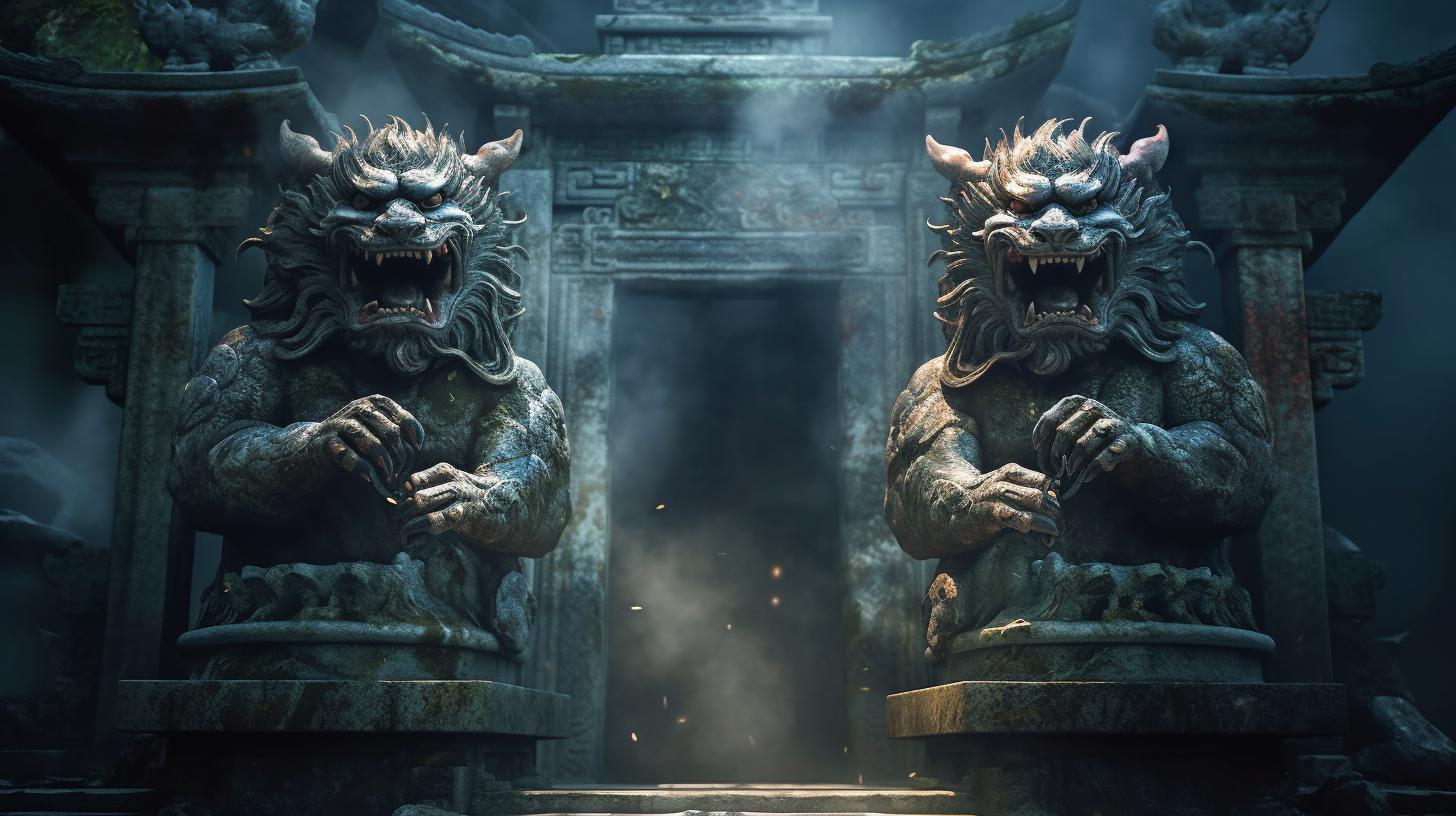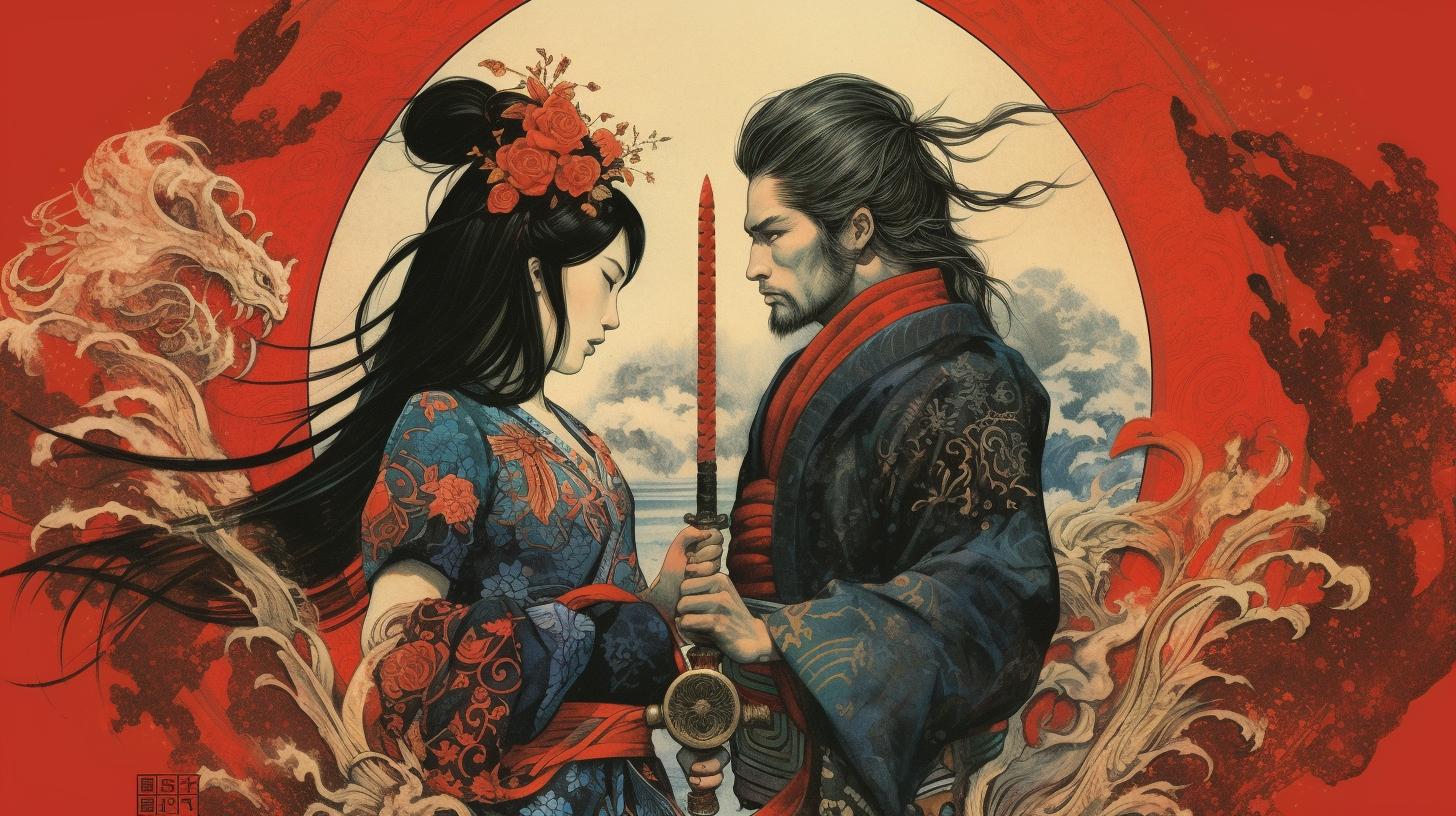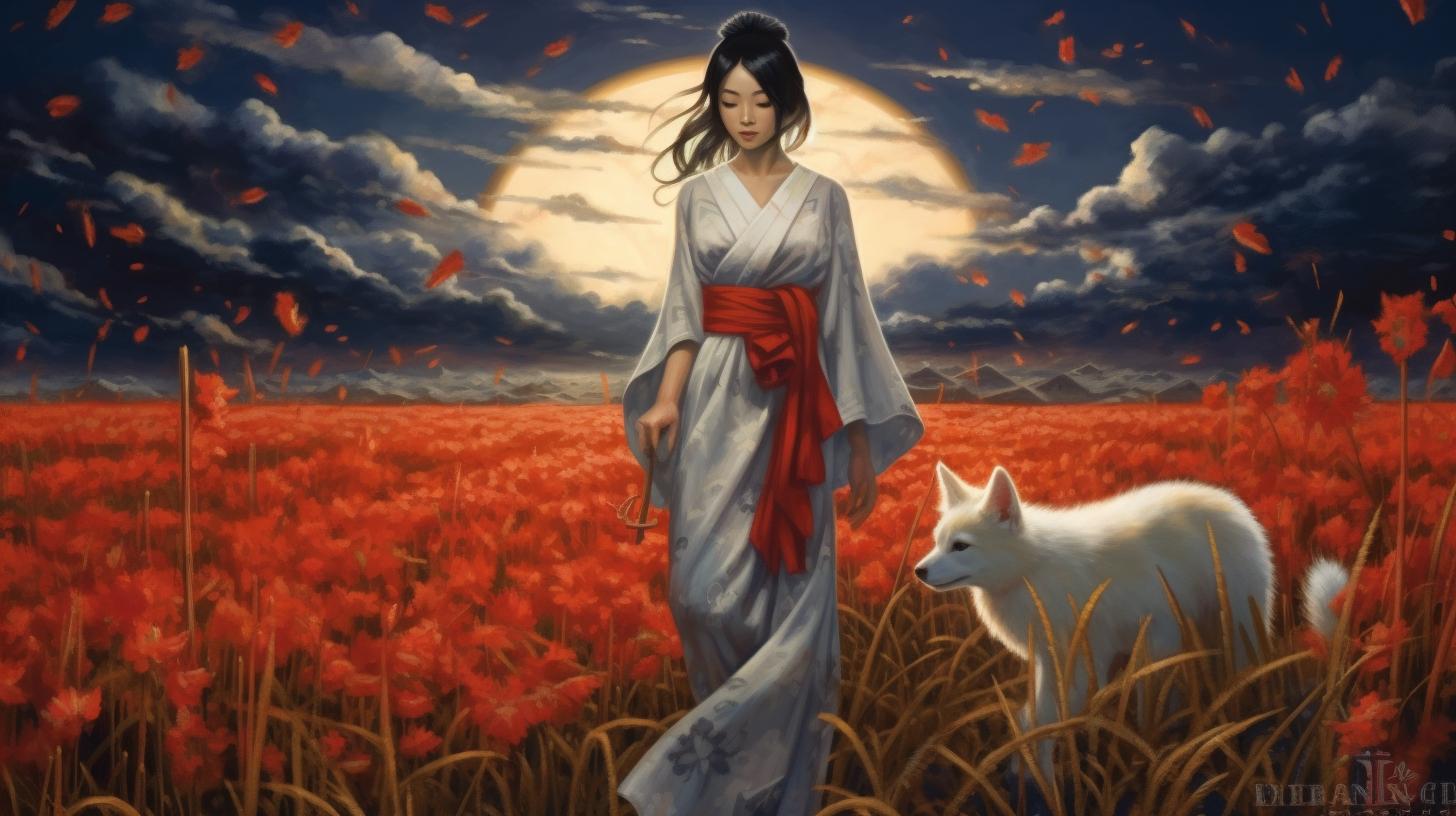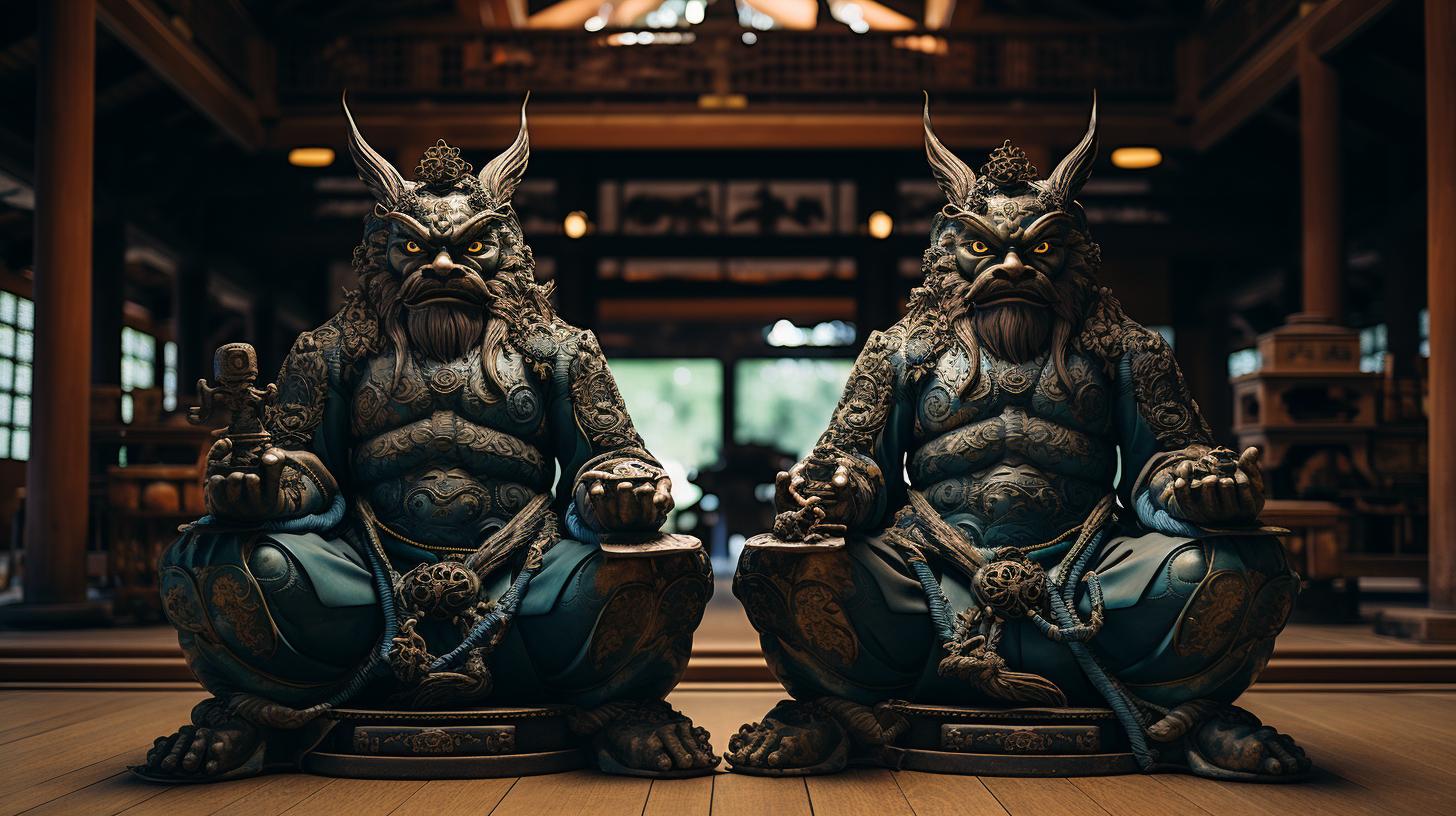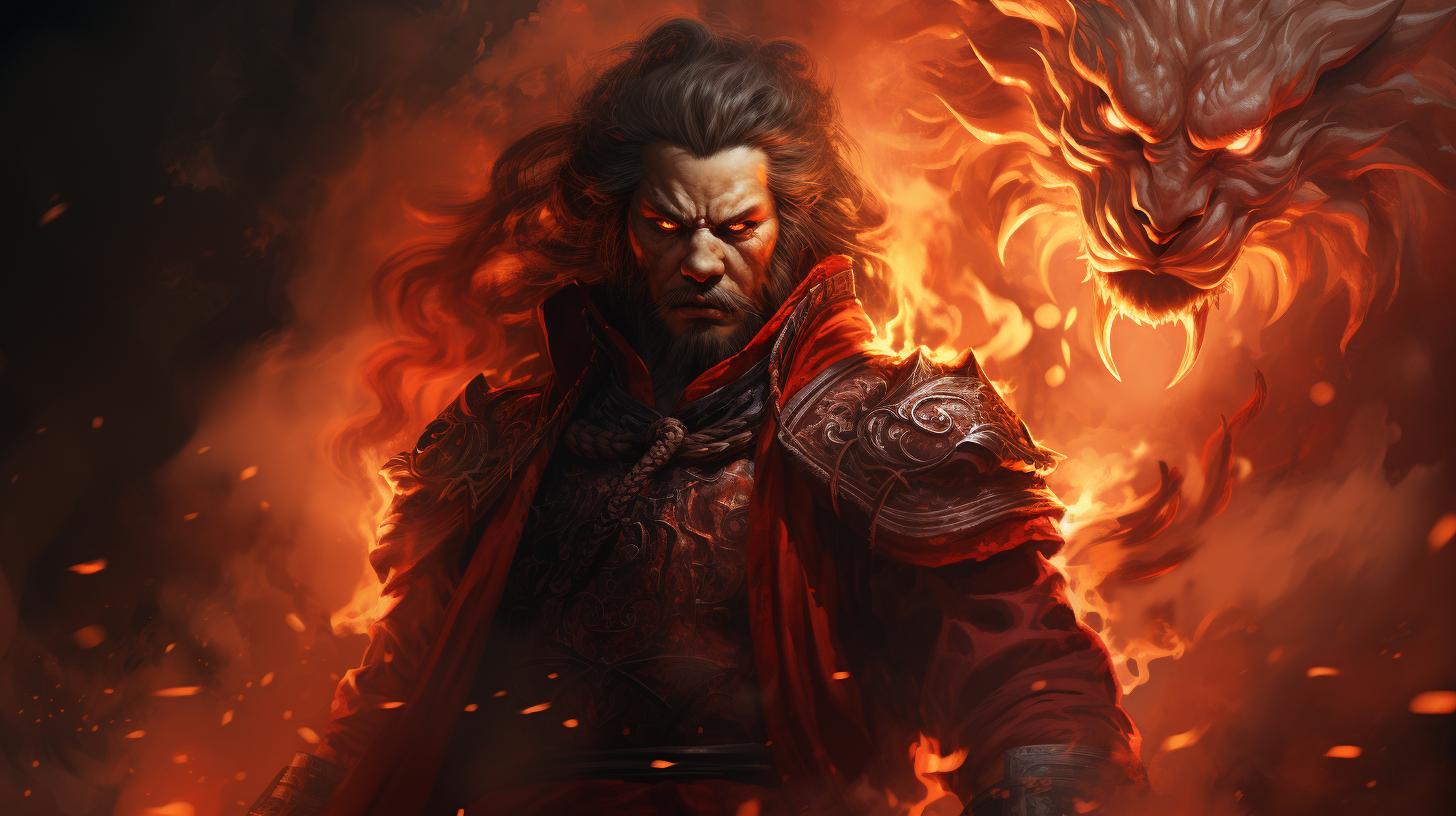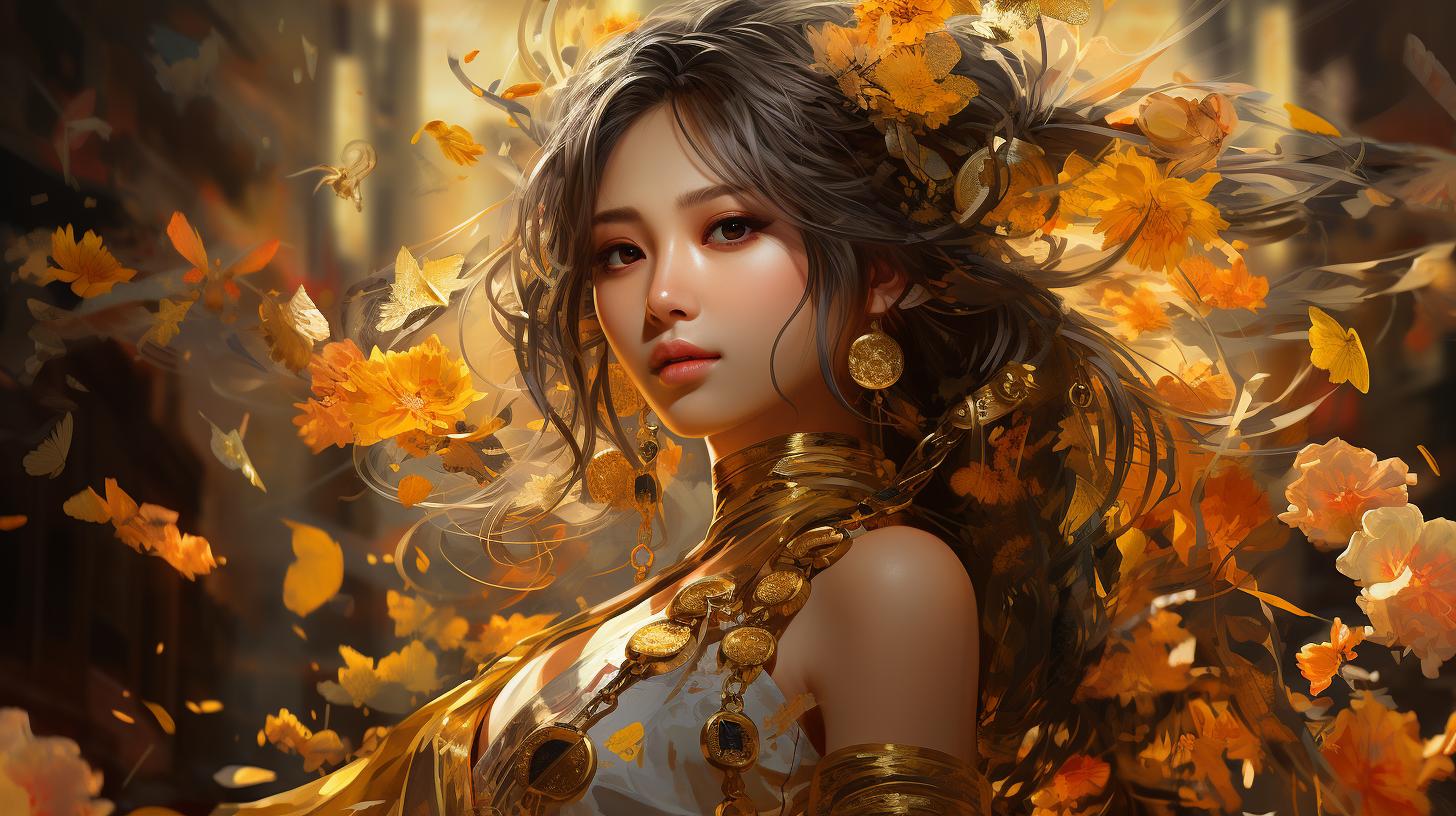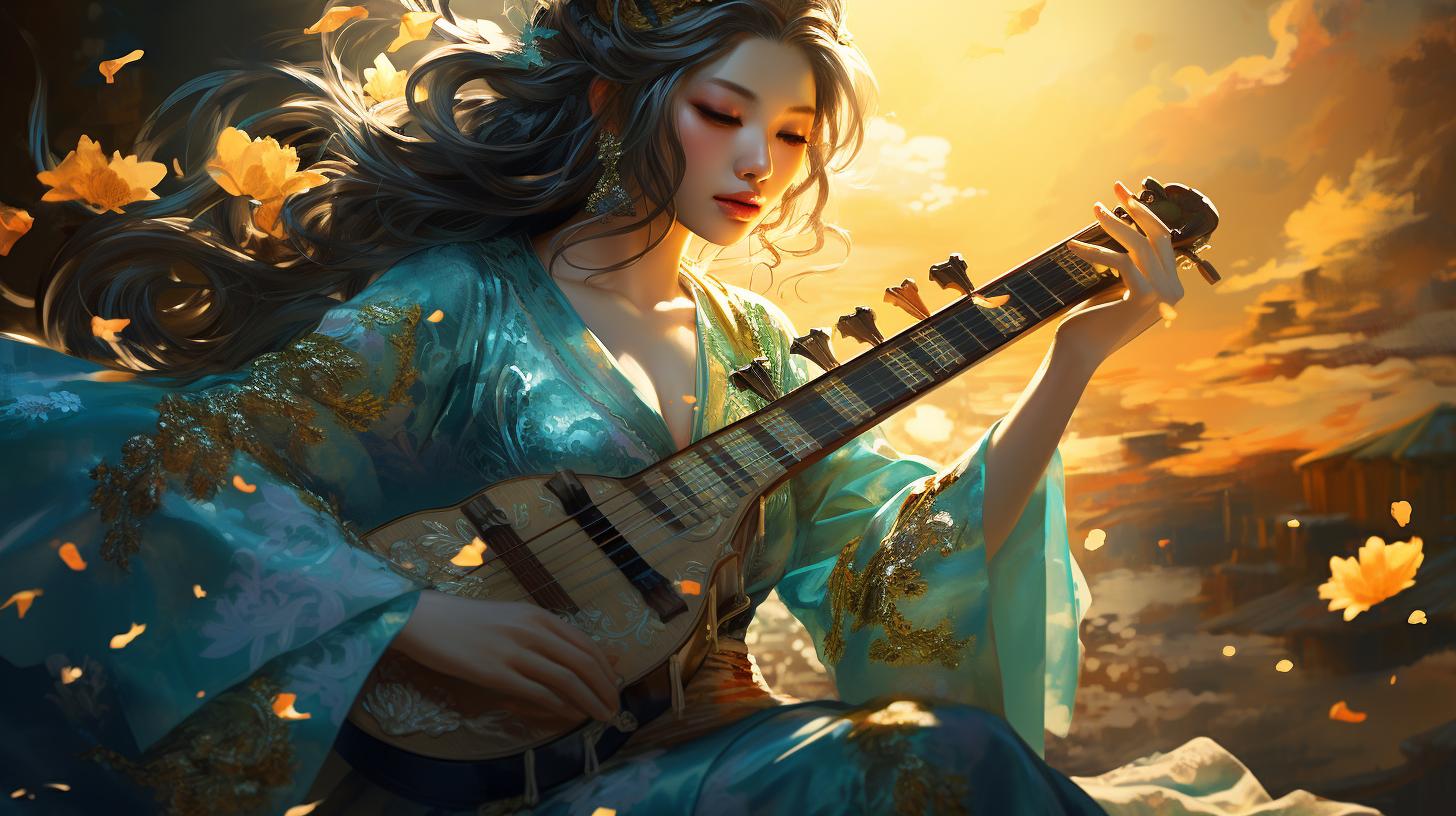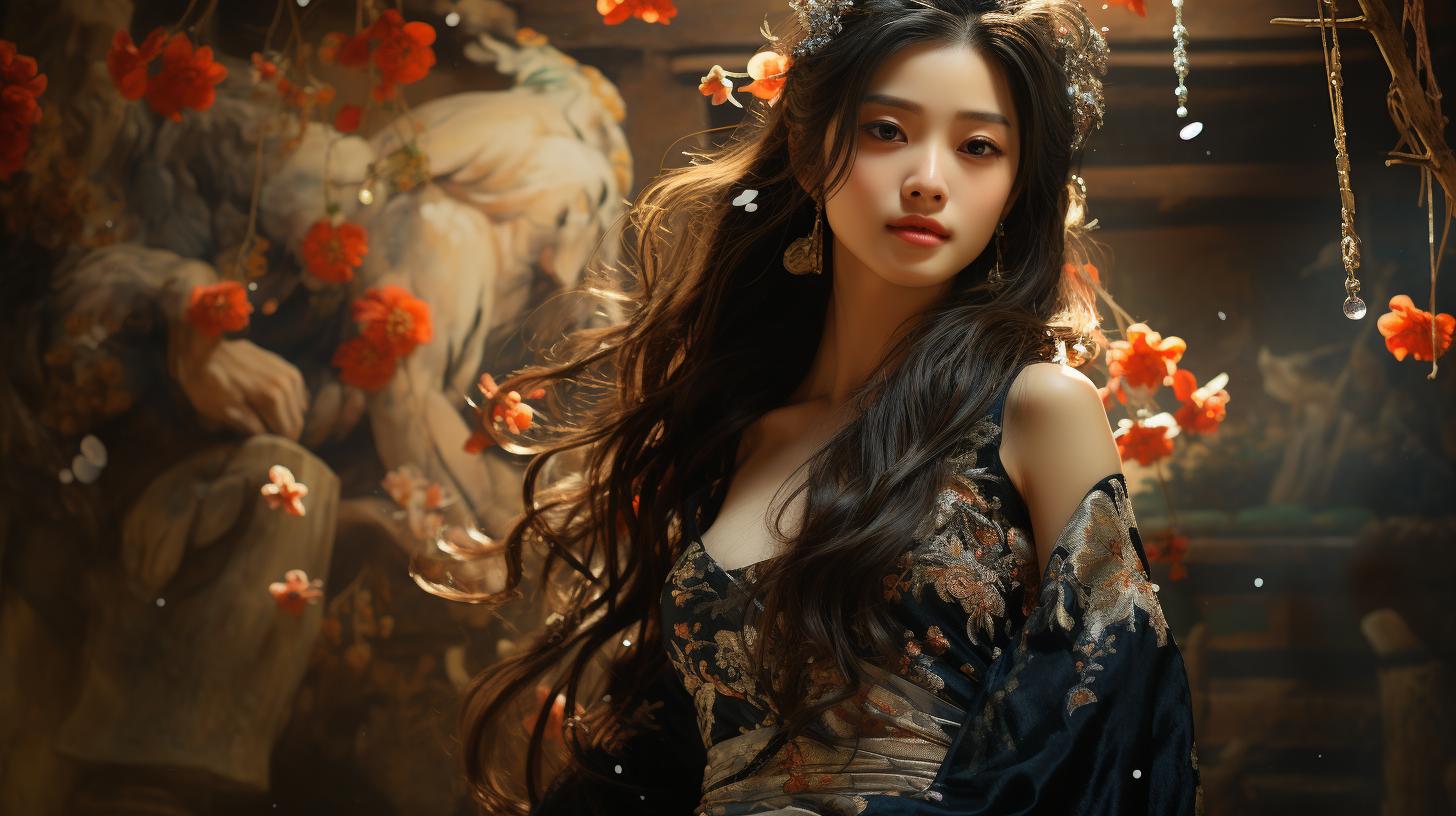Fujin God of Wind: A Detailed Look into Japanese Mythology
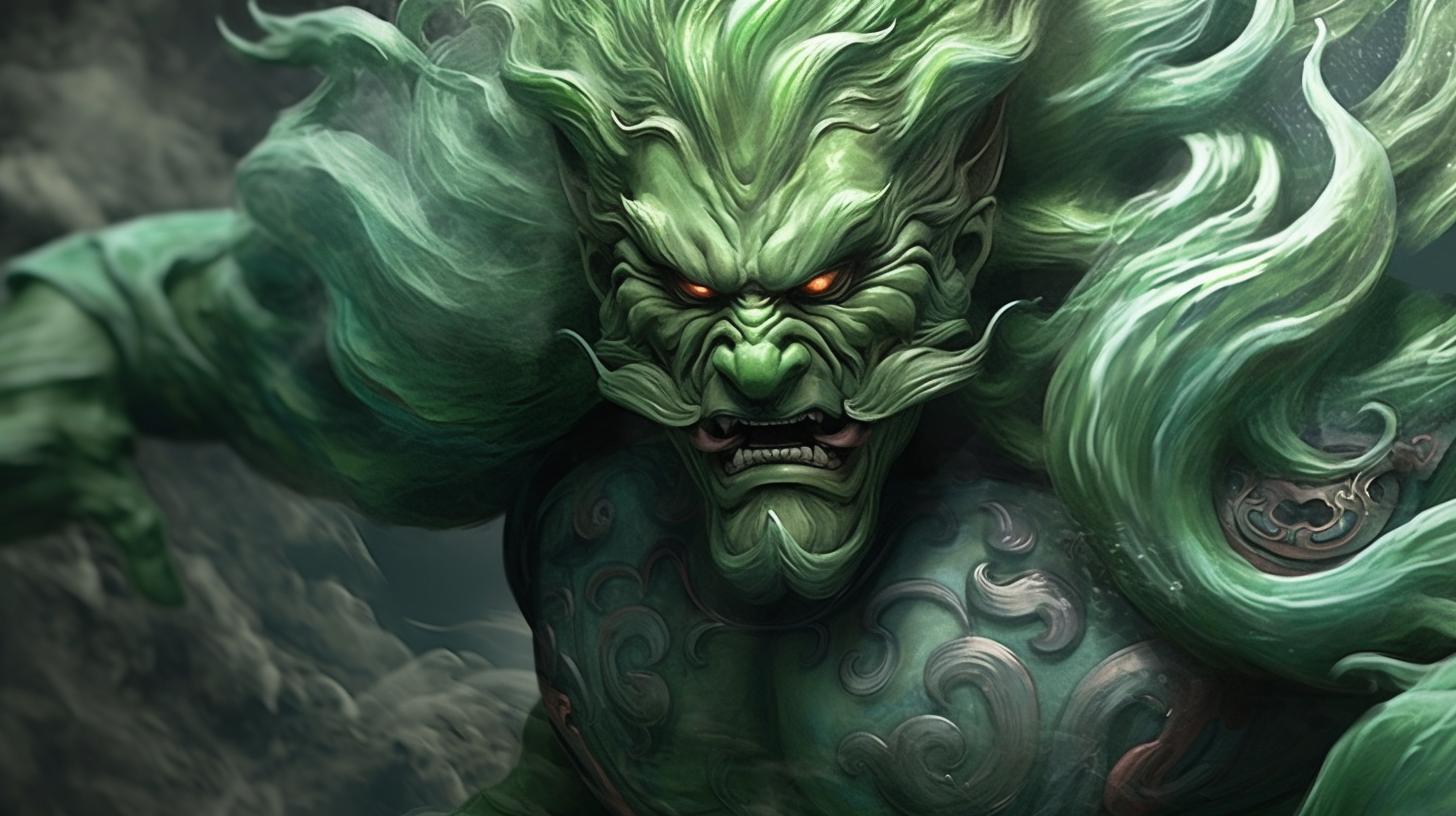
Japanese mythology is a rich and fascinating subject that has captivated people around the world for centuries. One of the most fascinating gods in Japanese mythology is Fujin, the god of wind.
Fujin is a powerful and complex deity, with a rich history and a strong influence on Japanese culture and folklore. Along with Raijin, the god of thunder, Fujin is one of the most important gods in Japanese mythology.
In this article, we will explore the fascinating world of Japanese mythology and take a detailed look at the god of wind, Fujin. We will examine Fujin’s role in Japanese culture and folklore, his family tree and relationships with other gods, and what makes him such an intriguing and enduring figure in Japanese mythology.
Join us on a journey of discovery as we delve into the fascinating world of Fujin and Japanese mythology.
Overview
Introduction to Japanese Mythology
Japanese mythology is a rich and complex collection of stories and legends that have been passed down through the ages. These tales are filled with deities, creatures, and heroes, and they offer a window into the beliefs, values, and customs of Japanese culture.
Fujin: The Japanese God of Wind
Fujin is one of the most intriguing and important gods in Japanese mythology. He is the god of wind, and his influence can be felt throughout Japanese culture and folklore.
Fujin is both powerful and unpredictable, and his role in Japanese stories is both complex and fascinating.
Raijin: The Japanese God of Thunder
Raijin is another significant god in Japanese mythology. He is the god of thunder, and he is associated with both destruction and protection. Raijin is a powerful and imposing figure, and his story is closely tied to Fujin’s.
Comparing Japanese and Greek Mythology
While Greek mythology is perhaps more well-known in the Western world, there are many similarities between Japanese and Greek myths. Both traditions are filled with gods, heroes, and magical creatures, and both offer a unique lens through which to view the world.
A Brief History of Japanese Gods
The history of Japanese gods is long and varied, with numerous gods and goddesses being worshipped and revered throughout Japan’s history. While many of these deities have faded into obscurity over the centuries, others, like Fujin and Raijin, continue to hold a central place in Japanese culture and folklore.
Fujin: The Japanese God of Wind
Etymology and Origins of Fujin
Fujin, the god of wind in Japanese mythology, has a fascinating etymology and origin story. The name Fujin is derived from the Chinese word for wind, “feng.” The early Japanese people adapted the Chinese character for wind, and it eventually became the name for their god of wind.
In Japanese mythology, Fujin is one of the many gods that is believed to have originated from the primordial couple, Izanami and Izanagi, who created the islands of Japan and many other gods as well.
Attributes and Appearance of Fujin
Fujin is depicted as a terrifying figure with a fierce appearance in traditional Japanese art. He is often shown carrying a bag of winds on his back in which he can control the wind’s direction and strength.
In Japanese folklore, Fujin is represented as a muscular demon with a horned red face and a fierce expression. He typically carries a large mallet or hammer and stands on a cloud, signifying his association with the sky and wind.
Fujin’s Family Tree and Relationships with Other Gods
Fujin is said to be the son of Izanami and Izanagi, a pair of primordial gods who created Japan and other gods. This makes Fujin the brother of many other important gods, including Raijin, the god of thunder.
Raijin and Fujin are often depicted together, highlighting their strong connection in Japanese mythology.
Fujin’s Role in Japanese Culture and Folklore
In Japanese culture, Fujin is known for his power and is often associated with wind, which can be both beneficial and destructive. Fujin is revered and feared as a god that can create and control winds affecting Japan’s weather and crops.
He is seen as a significant protector of Japan, capable of attacking or driving away enemies or bad spirits. Fujin is depicted in many traditional Japanese artworks, from paintings to sculptures, along with other Japanese gods.
Fujin’s Influence on Pop Culture
Fujin and other Japanese gods have also appeared in pop culture, such as video games and anime. Fujin is a character in the popular fighting game series, Mortal Kombat, bringing the god of wind to a broader audience.
Additionally, his monstrous and powerful representation has influenced several Japanese anime depictions of gods. In conclusion, Fujin, the god of wind, is an inspiring and terrifying figure from Japanese mythology.
Fujin has a deep origin story, a unique appearance and attributes, significant relationships with other gods, a notable position in Japanese culture and folklore, and a lasting influence on pop culture.
Raijin: The Japanese God of Thunder
Etymology and Origins of Raijin
Raijin, the god of thunder in Japanese mythology has a unique etymology and uncertain origins. The name “Raijin” comes from the Japanese words “rai” which means thunder and “jin” which means god or spirit.
Raijin is depicted as an oni, a type of demon, with a fierce and muscular appearance. His origins are linked to various other deities, including the earlier god Kaminari, who was also associated with thunder.
Raijin has been connected to the mythology of other cultures, including Chinese and Hindu mythology.
Attributes and Appearance of Raijin
Raijin, the god of thunder, is often depicted with a unique appearance. He is shown as having a muscular and fierce build, with horns on his head and sharp claws.
Raijin is usually depicted carrying a set of taiko drums, which he uses to create thunder. According to legend, his drums have the power to calm storms and disrupt enemies.
He is depicted wearing a loincloth and a tiger skin, symbols of his ferocious nature.
Raijin‘s Family Tree and Relationships with Other Gods
Raijin is believed to be the son of Izanami and Izanagi, the divine couple who created the islands of Japan. Raijin has a sibling named Fujin, the god of wind, with whom he often partners in ancient mythology and popular culture.
Raijin is also linked to other gods, including Kaminari and Susanoo, the god of storms.
Raijin‘s Role in Japanese Culture and Folklore
Raijin has held a significant place in Japanese culture and folklore for centuries. Raijin is believed to hold power over the weather, and his drums of thunder can both bring and calm storms.
He is also associated with war and battle, and his drums were believed to inspire soldiers and instill fear in enemies. Raijin has been an important part of festivals and ceremonies throughout Japan, where his role as a powerful and protective deity is celebrated.
Raijin‘s Influence on Pop Culture
Raijin has long been a symbol in popular culture, appearing in art, literature and entertainment. Raijin and his drums of thunder have been a popular subject in traditional Japanese art, as well as in modern manga and anime.
He has also been a character in video games, including the popular ‘Mortal Kombat’ series.
Comparing Fujin and Raijin
Similarities Between Fujin and Raijin
Fujin and Raijin share a significant role in Japanese mythology, both associated with natural powers that are feared and revered. They play critical parts in Japanese folklore, and their symbolism pervades the Japanese art and pop culture.
- Both Fujin and Raijin are among the oldest and most significant gods in Japan, worshipped for centuries and perceived as protectors of Japanese lands and people.
- Both of these deities embodied the power of elemental forces, with Fujin being the god of wind and Raijin being the god of thunder.
- Both Fujin and Raijin are depicted in traditional Japanese art and culture as powerful, muscular, and fearsome figures.
Their traditional representations are rarely shown as human but instead portrayed as creatures with monstrous features.
- In Japanese mythology, Fujin and Raijin often appear as a pair, signifying the duality of natural elements and the importance of maintaining balance, strength, and harmony in the world.
- Both Fujin and Raijin are associated with weather patterns that can be both harmful and nurturing, indicating their power over the environment.
They are considered protectors and bringers of natural phenomena that are vital for agriculture, fishing, and daily life.
Differences Between Fujin and Raijin
Although Fujin and Raijin share a common foundation in Japanese mythology, their mythos, symbolism, and importance differ in several ways. Here are some differences between them:
- Fujin is the God of Wind and is considered both beneficial and destructive, while Raijin is the God of Thunder and is also related to violence and death.
- Fujin was born from the remains of the Japanese primordial goddess, Izanami, while Raijin is the son of Izanami and Izanagi, making him part of the Shinto creation myth.
- The symbols used to represent these gods are different, with Raijin portrayed with drums and Fujin with a bag of winds.
Raijin is also often depicted with a fierce expression and a distinctive hairstyle, while Fujin is depicted with dragon-like features and a prominent belly.
- Fujin’s role in Japanese folklore and mythology is largely benevolent, while the mythology of Raijin is more aligned with destruction and violence.
Fujin and Raijin as a Pair: Their Role in Japanese Mythology and Culture
Fujin and Raijin‘s pairing is essential to aspects of Japanese culture and mythology.
- Fujin and Raijin commonly appear together in Japanese art, mythology, and iconography, exhibiting the close association between the thunder and wind.
- In Japanese culture and mythology, the pairing of these gods symbolizes the harmony between opposing forces and the balance required to maintain the cosmos.
- Fujin and Raijin‘s imagery and job are essential aspects of the Japanese martial arts, particularly within the martial art disciplines of Aikido, Judo, and Kyudo.
- Together, the gods also played an essential role in Japan’s history by creating a divine storm during the Mongol invasion and preventing the country’s invasion.
Other Japanese Gods and Mythology
Shinto and Buddhist Influences on Japanese Mythology
Shinto and Buddhism are the primary religions in Japan, and their influence is evident in Japanese mythology.
Shintoism emphasizes the worship of nature and ancestors, and it played a significant role in the development of Japanese mythology. Many Japanese gods, including Fujin and Raijin, are associated with natural phenomena, and they are often worshipped as protectors of nature.
On the other hand, Buddhism arrived in Japan in the 6th century, and it brought with it a new set of beliefs and a pantheon of gods. Many of these gods were considered to be manifestations of the Buddha, and they were incorporated into Japanese mythology.
Today, many Japanese people practice both Shintoism and Buddhism, and their respective gods and beliefs coexist in harmony.
Kami and Other Japanese Gods
Kami is a Japanese word that roughly translates to “spirits” or “gods.” It represents the concept of a supernatural being that is revered in Japanese mythology and Shintoism. Kami are often associated with natural phenomena, such as mountains, rivers, and trees, and they are believed to have an influence on people’s lives.
There are thousands of kami in Japanese mythology, and they come in different forms, from animal spirits to ancestral gods.
Apart from kami, there are also other important Japanese gods in mythology. For example, Amaterasu is the sun goddess and the most important deity in Shintoism. Susanoo, the god of storms and the sea, is known for slaying the Yamata no Orochi, an eight-headed serpent, and saving a princess in distress.
Norse, Celtic, and Chinese Influences on Japanese Mythology
Japanese mythology has been influenced by other cultures throughout history, including Norse, Celtic, and Chinese mythology. For instance, the story of Yuki Onna, a female spirit associated with snow, is influenced by Nordic mythology’s Skadi.
The Chinese influence is particularly evident in the story of the Rabbit in the Moon, which explains the presence of a rabbit in the moon, similar to the story of the hare in the moon in Chinese mythology.
Celtic mythology‘s influence on Japanese mythology is less apparent but can be seen in stories about the mystical realm of Annwn and the Welsh god Gwyn ap Nudd.
These influences highlight the interconnectedness of different cultures and their myths, and how they evolve and adapt over time. The result is a rich and diverse tapestry of Japanese mythology that continues to captivate and inspire people all over the world.

